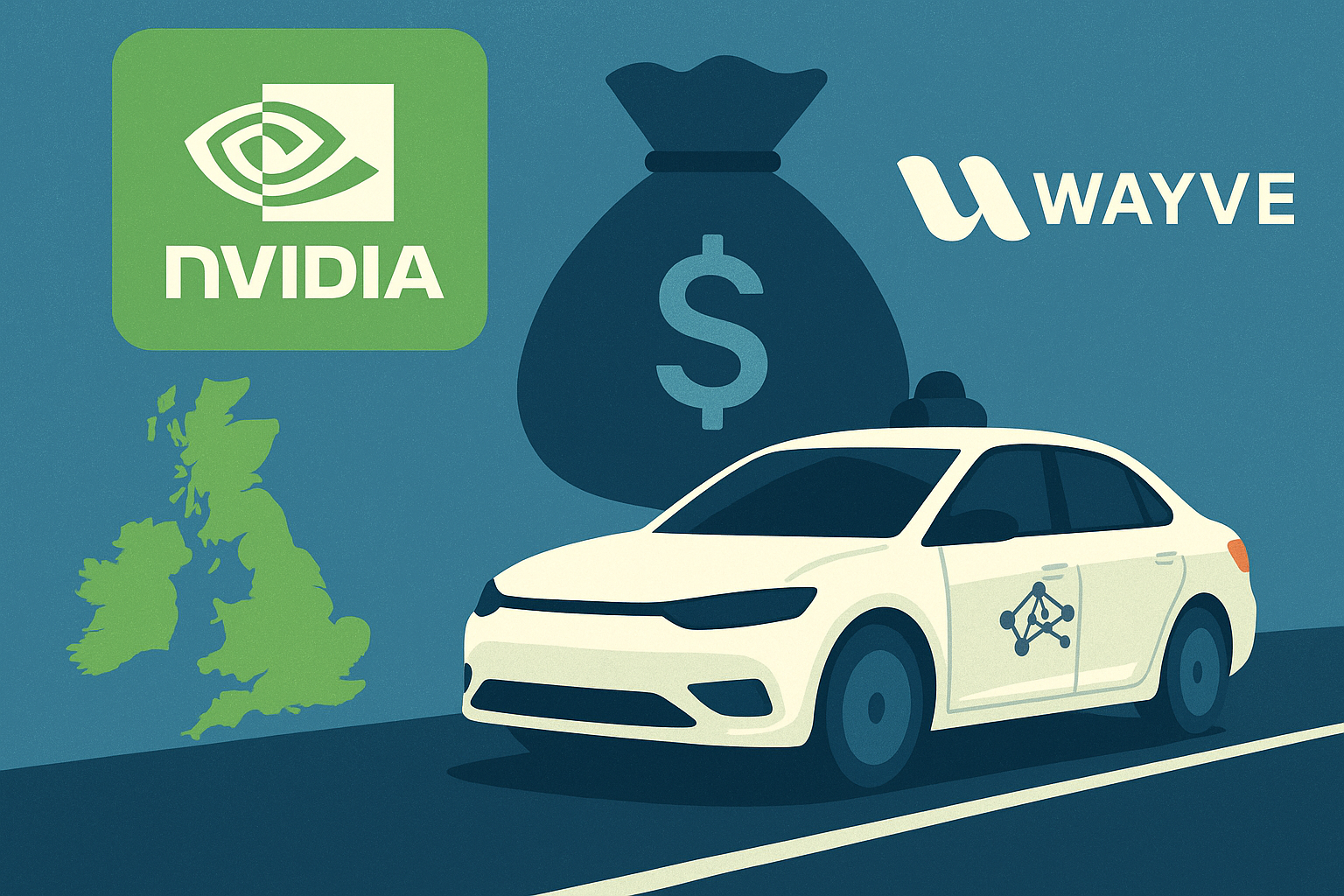The race to dominate autonomous driving technology has just shifted gears, with Nvidia reportedly in advanced talks to invest US$500 million in UK-based startup Wayve. For investors, this development is more than just another funding headline—it signals Nvidia’s intent to expand its influence beyond its already-dominant position in AI chips and into the broader mobility ecosystem.
The Next Frontier in AI: Why This Matters Now
Investor enthusiasm around artificial intelligence has surged in 2025, with capital flowing into everything from generative AI to robotics and mobility solutions. Nvidia, the undisputed leader in AI hardware, has already seen its market value skyrocket on the back of record demand for GPUs powering cloud computing and AI infrastructure. But with autonomous driving positioned as one of the most transformative markets of the next decade—forecast by McKinsey to reach US$300–400 billion in annual revenues by 2035—Nvidia’s rumored move into Wayve signals a calculated push into one of AI’s most commercially promising applications.
Wayve’s approach to self-driving is distinct. Instead of relying heavily on costly LiDAR and HD maps, the company leverages end-to-end machine learning using camera-based vision systems. This “leaner” strategy reduces infrastructure dependency and potentially accelerates scalability. According to Reuters, Wayve is already expanding testing operations across both Europe and the U.S., positioning itself to compete with global leaders such as Tesla, Waymo, and Cruise.
Why This Matters for Investors
For Nvidia, a substantial investment in Wayve could serve two strategic purposes:
- Vertical Expansion: Moving beyond chip supply into full-stack AI mobility integration, giving Nvidia a direct stake in the autonomous vehicle market.
- Ecosystem Control: Partnering with Wayve could ensure Nvidia’s GPU and AI platforms remain the backbone of next-gen mobility solutions.
From an investor perspective, this could unlock fresh growth channels for Nvidia, whose revenue streams are still heavily tied to chips. By embedding itself into autonomous vehicle technology, Nvidia can capture downstream value creation in a market that many analysts view as one of the decade’s biggest growth frontiers.
However, the risks are not trivial. Autonomous driving remains a nascent industry plagued by regulatory hurdles, safety concerns, and high development costs. The collapse of several AV startups in the last two years serves as a reminder that even well-capitalized ventures can stumble when technology fails to meet regulatory or consumer expectations.
The Bigger Picture: Future Trends to Watch
- Global Regulatory Shifts: The U.S., UK, and EU are tightening safety and liability standards for autonomous vehicles. Any changes here could delay commercialization timelines or raise compliance costs.
- Competitive Landscape: Alphabet’s Waymo, GM’s Cruise, and Tesla continue to advance, with billions already committed to development. Wayve’s leaner AI-first approach will be tested against these incumbents.
- Investor Momentum in AI Mobility: PitchBook data shows funding in autonomous driving startups has exceeded US$10 billion globally in 2025 alone, underscoring growing investor appetite despite risks.
If Nvidia finalizes this deal, it may spark a new wave of capital inflows into the sector, especially for startups with differentiated technology models like Wayve’s.
Key Investment Insight
Nvidia’s potential investment in Wayve should be viewed as a signal of confidence in the autonomous driving and AI mobility space, which could become a multibillion-dollar revenue driver over the next decade. For investors, exposure to Nvidia remains one of the most effective ways to play the AI megatrend, while those with higher risk tolerance may consider diversified bets on next-gen mobility, including EV and AI-driven transportation firms. Monitoring regulatory developments and adoption timelines will be critical in gauging near-term risks.
Stay ahead of the markets with MoneyNews.Today—your trusted source for daily insights into AI, crypto, emerging industries, and the global economy.





